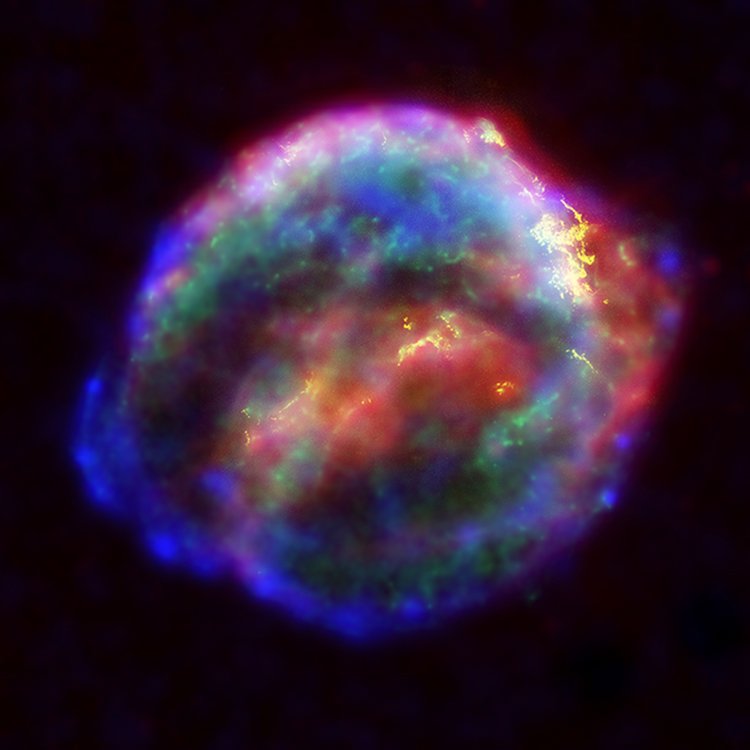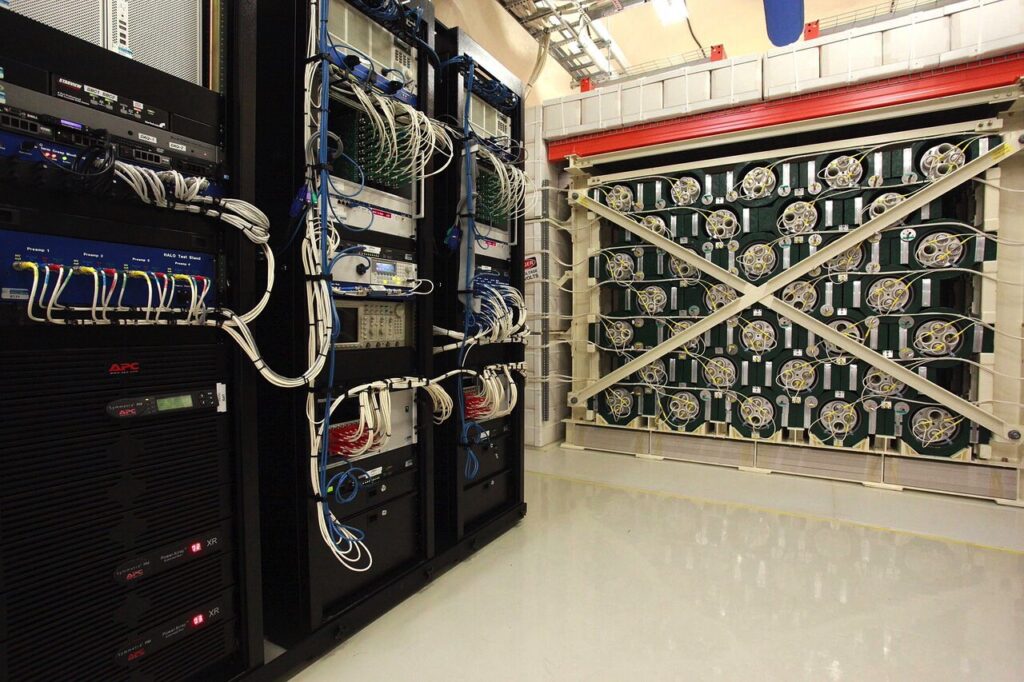It was October in the void. The white dwarf, Nain Blanc, had been, for some time, slurping up the hydrogen and helium from the vast gas envelope of its partner, a red giant, Géant Rouge. When they were younger, the two stars burned bright in the dark of empty space, tethered by their mutual gravity and locked in a seeming eternal dance.
Now, both stars were in retirement. Nain had long ago burned out its hydrogen, then its helium, then sloughed off its outer atmosphere leaving behind a beautiful white-colored carbon-oxygen core. Nain shone in the dark like a diamond, beautiful but vain and jealous in old age. It remembered a time when it proudly burned its own supply of hydrogen, a fiery gem in its youth. Now it cooled as a brilliant cosmic ember.
Géant had more recently swelled as it ended its hydrogen burning era and entered the briefer and more violent age of helium burning. It had grown vast in size, but stretched thin its outer membrane of hot gas. This farthest limb was held but feebly by its immense gravity.
Nain had taken advantage of this weakness. In a close orbit of Géant, it could tug on Géant’s farthest edge, pulling to its own carbon and oxygen surface fresh supplies of hydrogen and helium. Long ago had it sloughed off its own outer atmosphere in a beautiful planetary nebula. Now it was pulling back a fresh supply of gas from Géant.
But on this day, something felt … wrong. As Nain grew heavier and heavier with the stolen gas, something started to happen. Nain began to feel drawn inward, an irresistible pull that made it feel … compressed. A threshold was crossed. The latent heat of its once glorious age of fusion could no longer hold back the unyielding tug of gravity. Once, Nain’s speedy population of electrons, moving so fast and bound so tight and so close , could be drawn no closer. But as the ill-got bounty of gas accumulated on Nain, even the electrons gave up. An unstoppable collapse began.
And so it was that on that October day Nain succumbed to one last runaway collapse, one last unstoppable thermonuclear reaction, and detonated.

The explosion of Nain also destroyed Géant. What began as a beautiful dance of two stars, then a retirement into long elder years, ended in murder-suicide. Surely, one day, Géant might too have exploded; Nain’s crimes merely hastened their cosmic fate.
The first thing to escape this binary star funeral home was not the light from their remnant that we see today. Instead, it was a vast number of neutrinos.These ghostly subatomic messengers, forged when Nain’s collapse pulled electrons into protons and briefly created neutrons and neutrinos, feel not the dense debris field of the explosion. They passed through Nain’s erupted corpse and through Géant’s still-aging and intact body (one that would, only a short time after this, be torn apart by the blast from Nain).
Twenty-thousand years later, the first messengers of this explosion – the neutrinos – passed unnoticed through the Earth. This was on or about October 8, 1604. Hours later, on October 9, the light finally made it to Earth. It’s not that light travels more slowly through the expanses of space than do neutrinos. Quite the opposite, neutrinos travel slightly slower than light. But unlike neutrinos, like gets tangled up on its way out of the explosion of Nain. This keeps it from making much progress, even though in between its starts and stops it is traveling as fast as anything can in the universe. This puts it behind the neutrinos, who could care less about material substance.
In 1604, Johannes Kepler did not know about neutrinos. Nobody would know about those until 1930, and even then it would take 26 more years to find evidence of these speculative particles.
But Kepler knew about light. When a “new star” appeared in the sky on October 9, Kepler would observe it with the naked eye (the primary means by which astronomy was conducted in those days) and describe it in a work, De Stella Nova (“The New Star”). Plenty of other people saw it, too, of course … it is hard to miss a new star in the sky. Its light eventually faded away and was seen no more.
This was the last recorded visible supernova in our galaxy. The telescope would not be invented for a few more years, and since that invention no visible supernovas have occurred in the Milky Way.
Such stellar deaths occur about once per century per galaxy. Our corner of the Milky Way has not been treated to one of these in over 418 years, and certainly not since the invention of one of the most singularly important instruments in human history. But supernovas are tricky. By the time you see one and then aim your telescope at it, you have already missed vital data.
The fact that the blast wave of light is preceded by one of neutrinos, a speculation confirmed during the observation of Supernova 1987a, will aid in the detection of the next galactic supernova. 1987a happened not in the Milky Way but in the Large Magellenic Cloud, a satellite galaxy of the Milky Way. Since 1987, several generations of large neutrino detector have been built in multiple locations across the planet. Seeing those neutrinos, then alerting telescopes of a possible forthcoming supernova, is a critical tool in the astronomy toolbox. After all, supernovas are a once-in-a-century event. Most humans who see one won’t live to see the next one. No human who saw that last one comes even close to having survived until today (a lot has happened since 1604). For most astronomers, seeing every phase of this explosion is a do-or-die event that better be done right when it happens. There are no second chances or do-overs on stellar deaths.

I now work on one of these neutrino experiments. HALO, the Helium and Lead Observatory, is a large geometric arrangement of lead bricks (shaped into curved frames) and gas-filled tubes (containing Helium-3). It detects neutrinos by catching them slamming into lead atoms. A single neutrino can pass through a light-year of lead and might strike a single lead atom. However, certain kinds of supernovas produce most of their explosive energy in neutrinos … typically making something like 1058 (1 with 58 zeroes after it) neutrinos. Even at our distance from the Large Magellenic Cloud – 160,000 light-years – this can result in a million-trillion neutrinos passing through an experiment. Even if only a small fraction of those hit lead atoms in HALO, we would expect to see many “interactions” (the result of lead-neutrino collisions) in just a few seconds.
In HALO, a neutrino should interact with a lead nucleus and create an isotope of bismuth. This isotope is very unstable, and emits radiation as it stabilizes. This radiation is in the form of gamma rays and neutrons. The neutrons find their way into the Helium-3 gas, slowing as they do so, and then are captured by Helium-3 nuclei. A short time later, the Helium-4 isotope kicks out a proton and this ionizes the gas in the tube, resulting in a pulse of electrical energy. It is this pulse that HALO detectors, an indicator of that original neutrino interaction.
Of course, many things can create electrical pulses in such an experiment. Separating the real neutrons from the electronic noise is the trick, and luckily real neutrons produced by real neutrinos from real supernova blast waves have distinctive patterns compared to electronic noise.
When a probable supernova detection is made, its existence is sent to the SuperNova Early Warning System, or SNEWS. This alert bulletin is then combined with other alerts (or a lack of such alerts) from other facilities to determine if this is a true positive or false positive. If a true positive is the conclusion, then a formal notice goes out from SNEWS to all participating telescopes and instruments across the world.
It is extremely exciting to be part of this project. HALO has outstanding up-time, typically far better than 97-99%. It has run continuously for 10 years, quite a record in and of itself. Of course, all of this is necessary: you do NOT want to miss the next galactic supernova. Its simply design and internal redundancy help to make it so reliable, but of course no project can run forever without its human keepers. I am proud to now serve among the long line of HALO Collaboration members.


